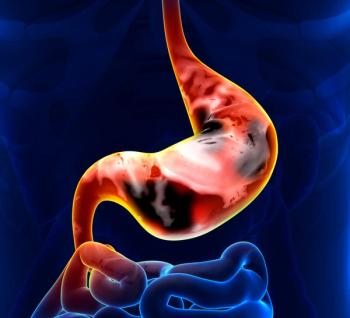
Longer Travel Distance Linked With Higher Stage Colon Cancer at Diagnosis
The greater distance a patient had to travel to reach a diagnosing facility the more likely that patient was to present with a higher stage disease of colon cancer, according to the results of a recent study.
The greater distance a patient had to travel to reach a diagnosing facility the more likely that patient was to present with a higher stage disease of colon cancer, according to the results of a study
However, once the patients who had traveled the furthest received their diagnosis, they had an increased likelihood of earlier initiation of treatment compared with patients who had traveled shorter distances.
“Although these two finding would seem contradictory, one possible explanation is distance may act as a barrier for patients pursuing screening services, but once diagnosed, distance becomes less of a barrier because the patient will more actively pursue necessary treatment,” said study author Nader N. Massarweh, MD, MPH, from the department of surgical oncology at the University of Texas MD Anderson Cancer Center. “Put another way, if a patient doesn’t think or know anything is wrong, he or she might be more apt to drag their feet about getting that colonoscopy they’ve been putting off, but once metastatic colon cancer is a known diagnosis, he or she will be very aggressive about pursuing needed treatment.”
Previous research has suggested that travel distance or time likely affects the health care that patients receive. According to Massarweh, this is particularly important in common diseases such as colon cancer that can be detected with effective screening modalities where treatment is generally straightforward if the disease is diagnosed early.
“To date, the existing data on this topic have neither looked at a broad enough geographic cross-section of the United States nor focused on a representative enough cross-section of patients to adequately address whether travel distance has a real impact,” Massarweh said.
In this study, he and his colleagues used data from a historical cohort of patients with colon cancer in the National Cancer Data Base from 2003 to 2010 to evaluate if travel distance from a diagnosing facility affected stage at diagnosis.
The study included 296,474 patients with colon cancer, of whom 3.9% had to travel 50 miles or longer to the diagnosing facility. Demographic results indicated that fewer black patients, patients with higher income, and patients with lower education had to travel longer distances (P < .001 for all).
Those patients who had to travel 50 miles or longer had an 18% increased risk of presenting with metastatic disease compared to those traveling less than 12.5 miles and those traveling 12.5 miles to 49.9 miles (OR = 1.18; 95% CI, 1.12-1.24).
However, those who traveled 50 miles or more had a 10% increased likelihood of early treatment initiation compared with those who traveled less than 12.5 miles (OR = 1.10; 95% CI, 1.08-1.13), and an 11% increased likelihood compared with those who traveled 12.5 to 49.9 miles (OR = 1.11; 95% CI, 1.08-1.13).
According to Massarweh, although colonoscopy is widely considered the standard for colon cancer screening, there are other proven, effective, and simple screening modalities that could be utilized in areas lacking specialists who can provide colonoscopy.
“For example, there are health systems in this country where fecal occult blood testing is the preferred and dominant screening modality,” he said. “In these systems, colon cancer screening rates far exceed the current national rate. Importantly, fecal testing does not require a specialist and can be ordered/performed by the patient primary or family doctor.”
In a health care system where cost control is becoming increasingly important, improving the screening rate of very common and very treatable cancers like colon cancer would likely not only lead to improved patient outcomes, but could also decrease the amount of care patients need and the number of resources needed to adequately address their disease, Massarweh said.
Newsletter
Stay up to date on recent advances in the multidisciplinary approach to cancer.

















































































